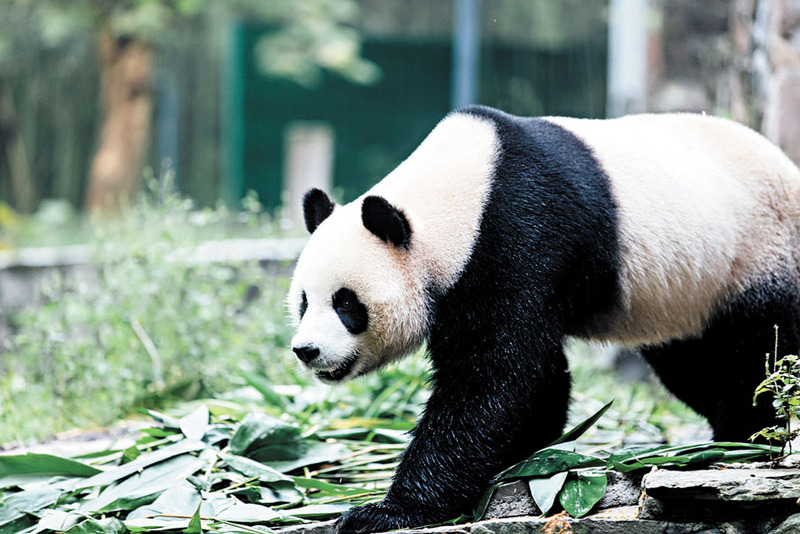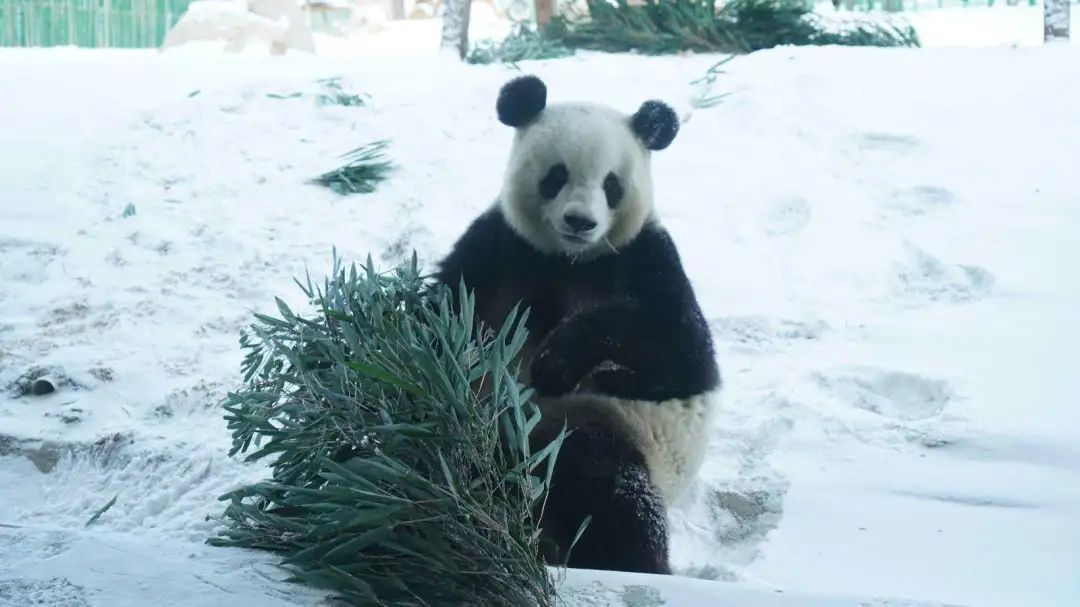The giant panda (Ailuropoda melanoleuca) is a rare animal unique to China. It is known as a "national treasure" and has received widespread attention around the world. Not only does it attract countless people's attention because of its cute appearance, but its endangered status also triggers people's deep thinking about the protection of wild animals. Although the giant pandas we often see are usually black and white and chubby, in fact, there are not a single species of giant pandas, but there are different types. This article will introduce the different types of giant pandas in detail, including species differences, habitats and ecological characteristics.
The giant panda belongs to the mammals, Carnivora, Ursidae. Their food is mainly bamboo, but they occasionally eat other plants and small animals. Giant pandas usually feed on bamboo and maintain their physical strength by consuming a lot of bamboo. The giant panda is very significant in size, usually about 1.2 to 1.8 meters long, and can weigh between 85 kg and 125 kg. They are known for their slow movement, low metabolic rate, and highly bamboo-dependent lifestyle.
Species characteristics:The traditional giant panda is the common giant panda we see, with distinct black and white fur on its body. This giant panda lives in the mountainous areas of central China, especially in bamboo forests in Sichuan, Shaanxi, and Gansu. Their black fur usually appears around the eyes, ears, limbs, and shoulders, while the rest of the body is white.

Habitat:The traditional giant panda lives in high mountain bamboo forests at an altitude of 1,200 to 3,100 meters, where bamboo is abundant and the climate is mild, suitable for the survival of giant pandas.
Ecological characteristics:
Eating habits: Giant pandas mainly feed on bamboo, about 90% to 99% of their diet is made up of bamboo.
Reproduction: Giant pandas breed in spring every year. Generally, they will start breeding when they are over 2 years old, but due to the short breeding season (only 1-2 days a year), the reproduction rate is low.
Species characteristics: Small giant pandas are a relatively small size of giant pandas. They are usually lighter than traditional giant pandas, about 60 kilograms. These small giant pandas are usually more sturdy and have longer legs, adapted to survive in higher altitudes.

Habitat:These small pandas are usually found in more rugged terrain, such as in the high mountains of Sichuan Province. Bamboo grows less sparsely in these places and the air is drier, but small pandas are able to adapt to this environment.
Ecological characteristics:
Food types: Small pandas not only feed on bamboo, but may also eat some small animals and berries, showing their wider food choices.
Life habits: Due to their small size, small pandas are usually more active and have adapted to relatively steep terrain and climatic conditions.
Species Characteristics:Black and white giant pandas are a variant of the traditional giant panda. Their black and white distribution is more symmetrical, especially on the face, limbs and back. Although this type of giant panda is less in number, they are more common in nature.

Habitat:The habitat of black and white giant pandas is usually in the deep mountains of Sichuan Province, where there is not only abundant bamboo, but also a suitable environment for their life. Compared with traditional giant pandas, black and white giant pandas tend to move in a wider area, increasing the scope of habitat utilization.
Ecological characteristics:
Large body size: Black and white giant pandas are usually more robust and have strong adaptability, especially in cold mountainous environments.
Group behavior: Although pandas are generally solitary animals, black and white giant pandas occasionally form smaller groups due to their strong sociality.
Species characteristics:Polar giant pandas are an extremely rare variant of giant pandas. They are larger in size and have thicker fur than traditional giant pandas, adapted to colder environments. Their black and white markings are often more distinct, adapted to the environment in the snow, and have strong warmth retention.

Habitat:This type of giant panda usually lives in colder mountainous areas, such as high altitude areas in northern Sichuan and parts of Shaanxi. Due to the cold climate, they often move in the snow to withstand the low temperatures.
Ecological characteristics:
Physiological adaptation: Polar giant pandas are better able to adapt to extreme low temperature environments due to their denser body hair.
Hibernation habits: Although giant pandas usually do not hibernate, polar giant pandas tend to reduce their activities and enter a hibernation-like state during the extremely cold season.
Whether it is the traditional giant panda or these different types of giant pandas, their survival faces severe challenges. Habitat loss, climate change, bamboo forest reduction and other factors all affect their survival. Protecting giant pandas is not only about protecting a precious species, but also a call for the protection of the natural ecological environment.
The Chinese government and the international community have taken a variety of measures to protect giant pandas, such as establishing nature reserves, promoting artificial breeding and reintroduction programs, etc. At the same time, the protection of giant pandas has also provided important experience and inspiration for the protection of other endangered species.
As one of the most representative endangered species in the world, the different types of giant pandas reflect their diversity in adapting to different habitats. Understanding these different types of giant pandas not only helps us better understand the ecological needs of this species, but also plays a more precise role in protection work. By protecting these precious giant pandas, we can contribute to the global conservation of biodiversity.
animal tags: Panda Giant Panda
We created this article in conjunction with AI technology, then made sure it was fact-checked and edited by a Animals Top editor.